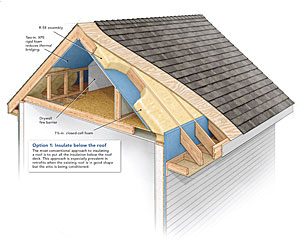Little Known Questions About Tapered EPS Roof Insulation - Cellofoam.

The Single Strategy To Use For Johns Manville R-8.6 Fiberglass Face Polyiso Roof Decking
Polyiso roof insulation is likewise produced at high density to end up being a much-specified cover board. Cover boards secure the roofing assembly from roofing system traffic, mechanical abuse and hail. These roofing cover boards are durable and light-weight. The Polyisocyanurate Insulation Manufacturers Association (PIMA) does impressive work in investigating the most recent trends in polyiso advances and is an excellent assistance for the insulation industry.
High-Density Extruded Polystyrene (XPS) Roofing System Insulation R = 5 With an R-value of roughly 5 per inch, extruded polystyrene (XPS) is created making use of an extrusion procedure to produce closed-cell rigid foam insulation with polystyrene polymer. Many producers include a color to the formula to add a distinct colouration, usually pink, green or blue to differentiate the item brand name.
See This Report on Commercial Roof Insulation: Why Is It Important? - FiberTite

For industrial roof, it is most typically specified for Inverted Roof membrane Assembly (IRMA) or Protected Membrane Roofing (PMR) systems. Extruded polystyrene is typically ranked in the middle of expense vs. R-value in terms of cost/benefit assessment of flat roofing materials. It is susceptible to solvent-based adhesives and hot asphalt, and its usage in PMR systems needing ballast can make structural weight of the assembly an issue.

High-Density Expanded Polystyrene (EPS) Roofing Insulation R = 4. 6 Expanded polystyrene (EPS) is made from the exact same base polystyrene resins as XPS, but the manufacturing procedure is different, leading to beads that are formed and cut into various sizes and shapes or molded. High-density products have an approximate R-value of 4.

The smart Trick of CertainTeed - Home That Nobody is Talking About
Professionals like to set up EPS as it can be cut easily to satisfy website conditions, and it is lightweight. Theoretically, it has a more stable R-value over time as there are no chemical blowing agents that can outgas. There are no present research studies that can validate this attribute. The Roof Doctor has several downsides, nevertheless.
In addition, foot traffic on the roof can harm the product. 6. Glass Fiber and Mineral Fiber Batts and Panels R = Variable by Manufacturer The commercial roof industry phased out rigid fiberglass two-by-four panels as single-ply roofing systems became a bigger share of the market. Soft underfoot, fiberglass was not recommended for EPDM, PVC or TPO systems.
UNDER MAINTENANCE